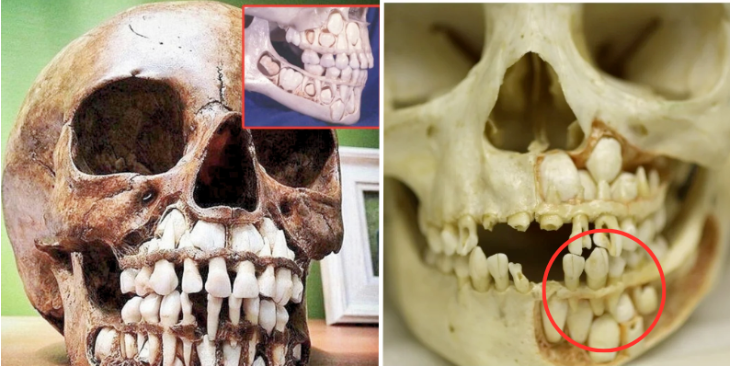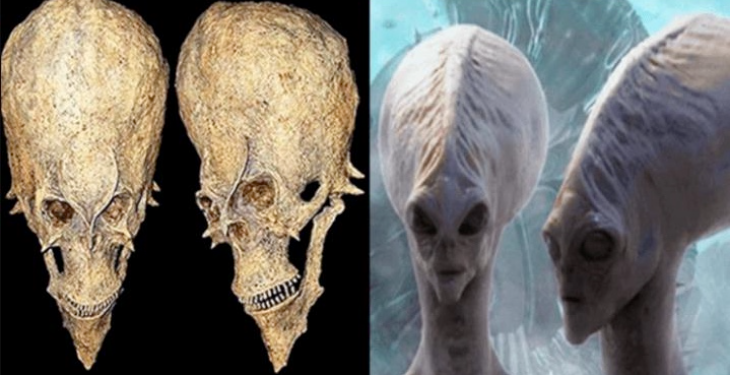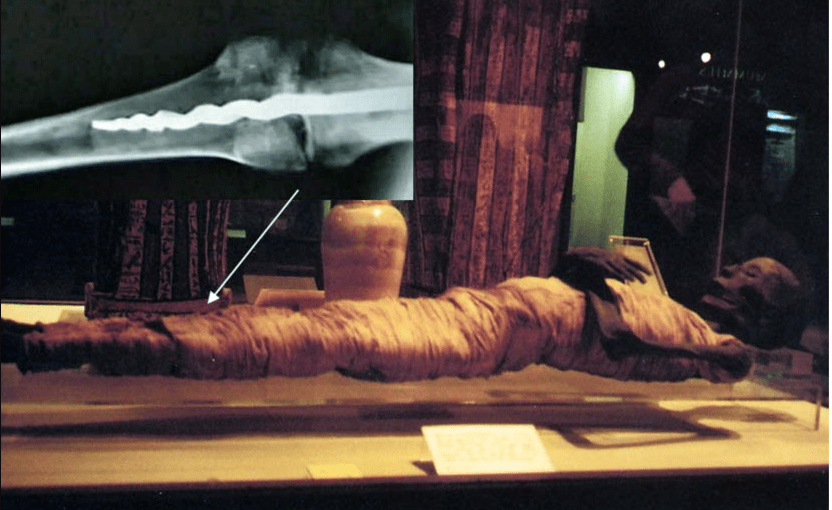
The Screw In The 2,600-Year-Old Mummy Surprised The Scientific World
In 1971, the Rosicrucian Museum in California acquired a sealed ancient Egyptian coffin containing the well-preserved mummy of a high status Egyptian male. More than two decades later, a team of scientists made a shocking discovery – the mummy displayed evidence of an advanced surgical procedure carried out nearly 2,600 years ago. Inside the mummy’s left knee was a 9-inch metal orthopaedic pin that had been inserted with such advanced biomechanical principles, that initially scientists could not distinguish it from a modern-day procedure.
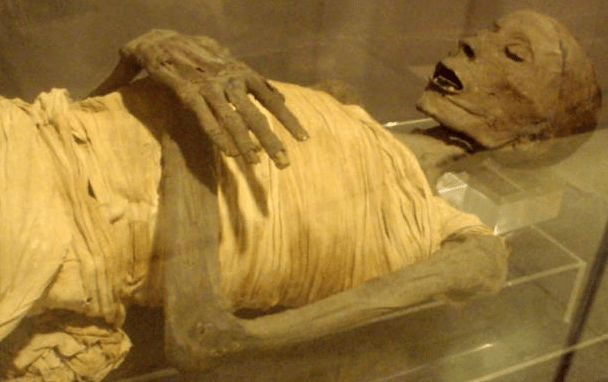
Usermontu – a mummy of unknown origins
When the Rosicrucian Museum acquired a sealed ancient Egyptian coffin back in the 1970s, they were unaware that it still contained a mummy. In addition, investigations revealed that this mummy was not the original owner of the sarcophagus – it belonged to a priest named Usermontu (‘the power of Montu’) – and that long after death, the mummy had been placed in Usermontu’s coffin. Nevertheless, the mummy of unknown origin has come to be known by the name of the original sarcophagus owner.
Analysis of the embalming procedure revealed that ‘Usermontu’ was an upper-class Egyptian male who lived during the New Kingdom of Egypt (between 16th–11th century BC). His mummified remains are 5ft (1.5m) tall and display traces of red hair.
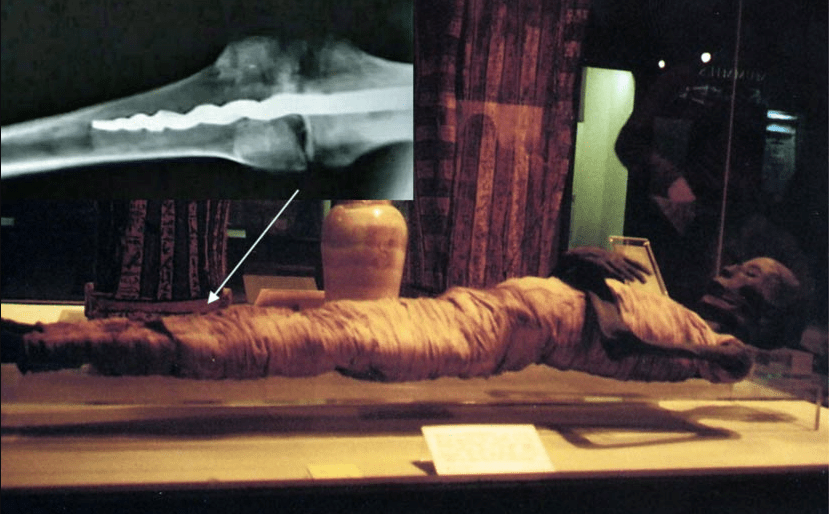
Shocking discovery
In August 1995, Professor C. Wilfred Griggs from Brigham Young University, Utah, and a team of experts, carried out x-rays on six mummies housed in the Rosicrucian San Jose Museum in advanced of a lecture he would be giving there, including the mummy of Usermontu. They were stunned when the x-rays revealed that one of the mummies had a 9-inch metal pin in its left knee.
Ancient or modern?
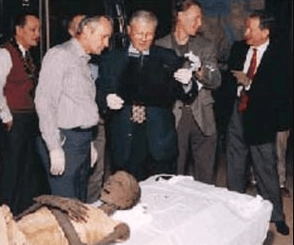
Brigham Young University (BYU) reports that it was impossible to see that the metal implant was ancient from the x-ray alone, leading Professor Griggs to believe that the pin had been placed there in more modern times to reattach the leg to the rest of the body.
“I assumed at the time that the pin was modern. I thought we might be able to determine how the pin had been inserted into the leg, and perhaps even guess how recently it had been implanted into the bones,” Griggs says in a report released by BYU. “I just thought it would be an interesting footnote to say, ‘Somebody got an ancient mummy and put a modern pin in it to hold the leg together.'”
Unraveling the mystery
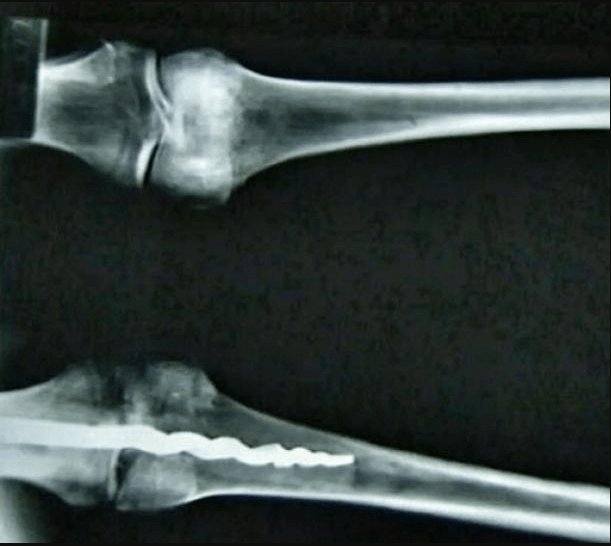
In order to investigate the nature of the implant, Griggs, Dr. Richard T. Jackson, an orthopaedic surgeon from Provo, and Dr. E. Bruce McIiff, chief of radiology for Utah Valley Regional Medical Center, carefully drilled into the bone to allow access for a tiny camera to examine the pin, and to extract samples of the bone and the metal.
The scientific team found traces of ancient organic resin, similar to modern bone cement, as well as traces of ancient fats and textiles still held firmly in place. Extensive investigations revealed that the advanced procedure had been carried out in ancient times, approximately 2,600 years ago.
Advanced orthopaedic procedure
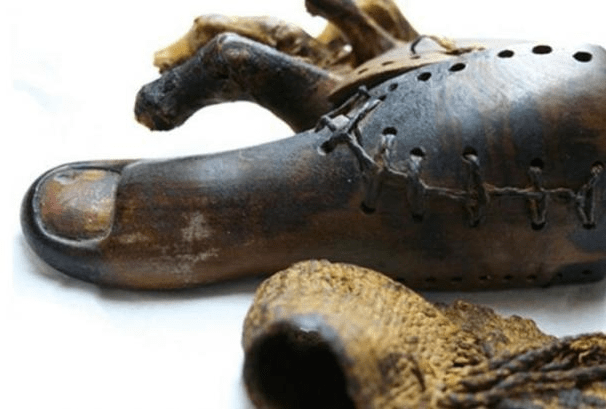
The research team were astounded that the pin had been created with the same designs used today to create bone stabilization.
“We are amazed at the ability to create a pin with biomechanical principles that we still use today—rigid fixation of the bone, for example,” said Dr. Richard Jackson. “It is beyond anything we anticipated for that time.”
ByU reports that the pin “tapers into a corkscrew as it enters the femur, or thigh bone, similar to biomechanical methods currently used. The other end of the pin, which is positioned in the tibia, or shin bone, has three flanges extending outward from the core of the pin that prevent rotation of the pin inside the bone.”
“How fascinating that the technician took such considerable thought constructing the pin,” Griggs says. “The technician could have just simply wired the leg together and assumed that in the resurrection it would knit back together.”
“The story tells us how sophisticated ancient people really were,” Griggs says. “Sometimes our cultural arrogance gets in the way of our being able to appreciate how people from other cultures and times were able to also think and act in quite amazing ways.

